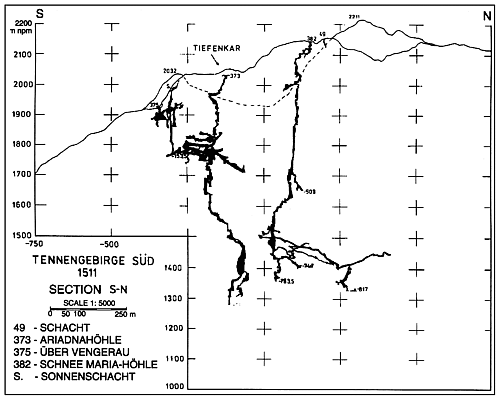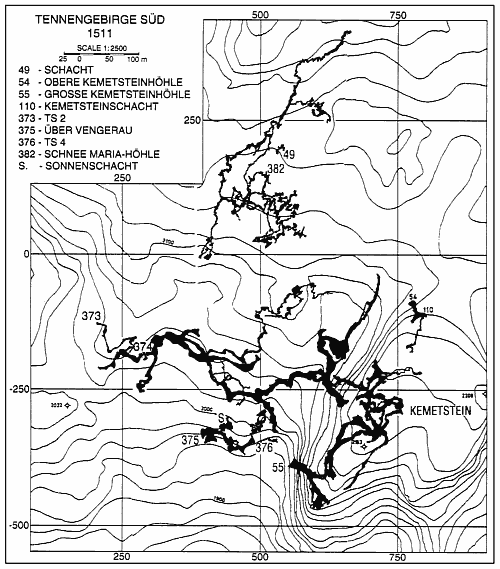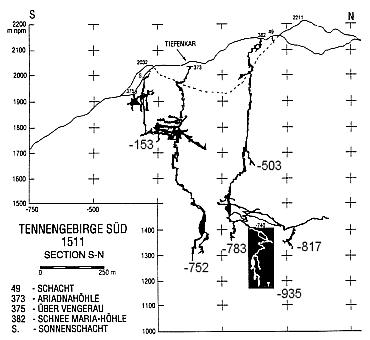| The task of this paper is to present the
activities of a Polish group of cavers of "FAKS" in the southern rim of
the Tennengebirge, in the region of the peaks Kemetstein and Wermutschneid.
The reason why we decided to explore there is in short presented above.
Krzysztof Makowski organized two expeditions in 1985 and 1988; it was
the first period of this exploration. They penetrated the regions of Kemetstein
and the blind valley Tiefenkar. At once it was obvious that the caves found
below the rim of the plateau were those with the biggest chance of getting
down the massif. Above this border, the ubiquitous rubble choked every
slit. There were found a few entrances in the southern flank of the Tennengebirge.
Three caves were chosen for systematic exploration: Ariadnahöhle, the Grosse
Kemetsteinhöhle (already known) and the Schnee Maria Höhle.
The entrance to Ariadnahöhle is situated in the western flank of the
Tiefenkar valley, at 2030 m. The initial parts are like in any alpine cave
- a narrow meander with many pitches. 200 m below something completely
new begins. The steep series drops into vast passages which develop horizontaly.
This level of huge halls and passages (between 1600 and 1900 m), so characteristic
for the Salzburger Alps, is known in slang of Polish speleologists as "gangi".
We found it also in this cave, and this parts were called this name - "Gangi"!
They are decorated by wonderful dripstones, basins of cave pearls and little
lakes surrounded by fabulous calcareous flowstones. In the first period
of exploration we concentrated on finding the way down. So we left the
fabulous passages "Gangi" and continued down just along the big underground
stream, by passing through pitches and meanders. More or less 700 m below
the surface, |
 Ariadnahöhle,
"Gangi", photo A. Dajek
Ariadnahöhle,
"Gangi", photo A. Dajek Kemetstein,
view from the north, photo A. Dajek
Kemetstein,
view from the north, photo A. Dajek

